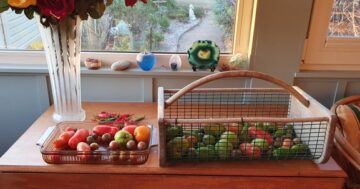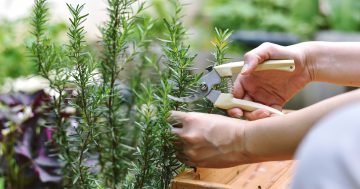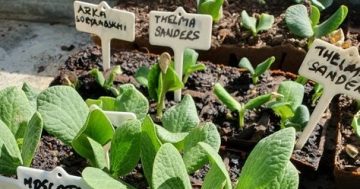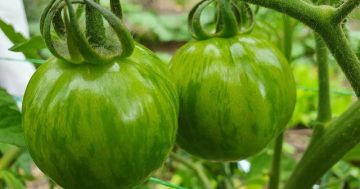
Floriade’s head gardener Andrew Forster offers great tips to keep your garden thriving with less water. Photo: Supplied.
The glorious Floriade Reimagined displays around Canberra have provided plenty of inspiration for gardeners looking to make the most of the spring weather and start their gardens. And while we know water is an essential part of helping our gardens to flourish, did you also know that outdoor water use accounts for around 40 per cent of the average household’s water consumption? With that much use, it is worth considering the amount of water you use on your garden and identifying ways to keep your water use down.
Floriade’s head gardener Andrew Forster has some great tips to keep your gardens thriving with less water. Andrew says knowing when to water is an essential part of keeping your garden happy and your water consumption low.
Andrew says it is much more effective to water at dawn or in the evening rather than during the heat of the day when a lot of the water you put on your garden evaporates rather than helping your plants grow. “During spring, summer and autumn, sprinklers and irrigation can only be used before 9 am or after 6 pm. You can water using a hose outside of these hours, but it must be fitted with a handheld trigger nozzle,” Andrew said.
“Give it a good deep water. If there is water sitting on your garden bed, let it soak in and then go over it again. Frequent, light watering encourages shallow roots so it’s best to aim for longer, less frequent watering which allows the top layer of soil to dry out before watering again.”
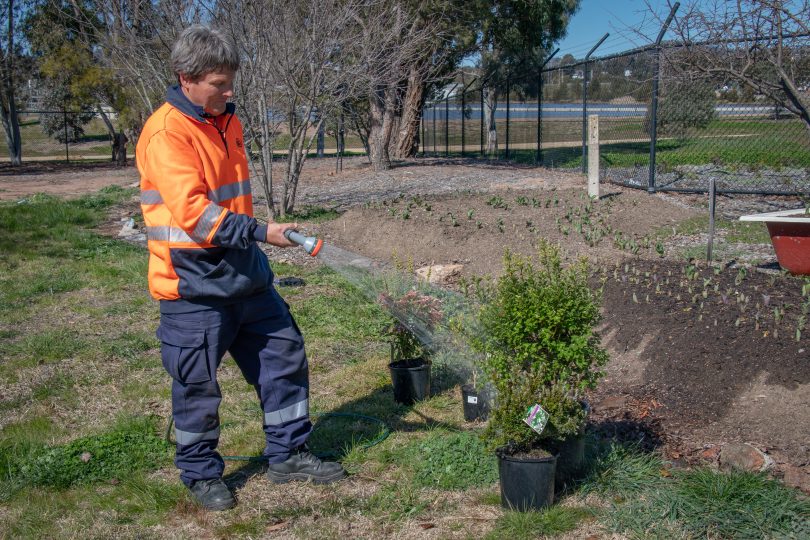
Floriade head gardener Andrew Forster shares his advice to get our gardens ready this spring. Photo: Supplied.
Andrew says soil is important to consider too, “In Canberra, we have soils that are rocky and contain a lot of clay so it is vital to prepare your soil before you start planting. This ensures your soil has a good structure so the water is able to penetrate deep into the soil.”
You can use a range of different things to prepare your soil. Applying products such as a clay breaker to break up any clay that is present within the ground structure will allow your plant roots to grow deeper. A planting compost will offer your plants nutrients and loosen tightly bound particles found in clay soil so roots can spread and water is able to drain and penetrate the plant’s root system.
When it comes to potting mix, Andrew’s best tip is to have a look at the ingredients. This will tell you what’s in the bag. It is important to get a mix that is high in nutrients which will help plants to grow. “Have a look at the back of the bag to identify the content,” says Andrew. “It’s a bit like cereal – you should always check the ingredients if you want to avoid choosing one with loads of sugar. But if you get a mix that has lots of nutrients in it, it will be really good for your plants.”
Andrew says potting mix is one of those areas where it’s best to spend a little extra to get the best results in the garden. “If you get a $5 bag of potting mix, it’s probably going to have less of the nutrients plants need than if you get a $10 or a $12 bag.”
He also emphasises the importance of getting a mix that is specific to your needs, whether that be a native mix, a citrus mix or a tomato vegetable and herb mix. “Buy a bag that is related to what you are trying to grow in the garden,” he explains, “High-quality potting mix can improve your soil structure, which helps it to retain moisture, meaning you don’t have to water your plants as often.”

Choose a high-quality potting mix to ensure your plants get the nutrients they need. Photo: Supplied.
And, don’t forget to mulch. Mulch can reduce evaporation from soil by up to 70 per cent. It is a simple and effective measure that can make your garden more water efficient and help keep it green all year round. Not only does mulch conserve water, it also helps keep soil a consistent temperature, reduces weed growth and, over time, can improve the soil structure and health of plants.
There are many different kinds of mulch, but Andrew says if you want to give your garden the most benefit it’s important to apply it correctly. “Make sure you apply a generous amount of mulch and build it up so it is 50-100ml thick. Put mulch around your plants, but don’t apply it too closely to the plant’s stem as this will prevent water from reaching where it’s needed most,” says Andrew. “Every spring, you should check the mulched areas of your garden and add more if the layer is starting to get thin.”
For more great gardening and water saving tips, head to the Icon Water website, or follow Icon Water on Facebook to see Andrew in action.












